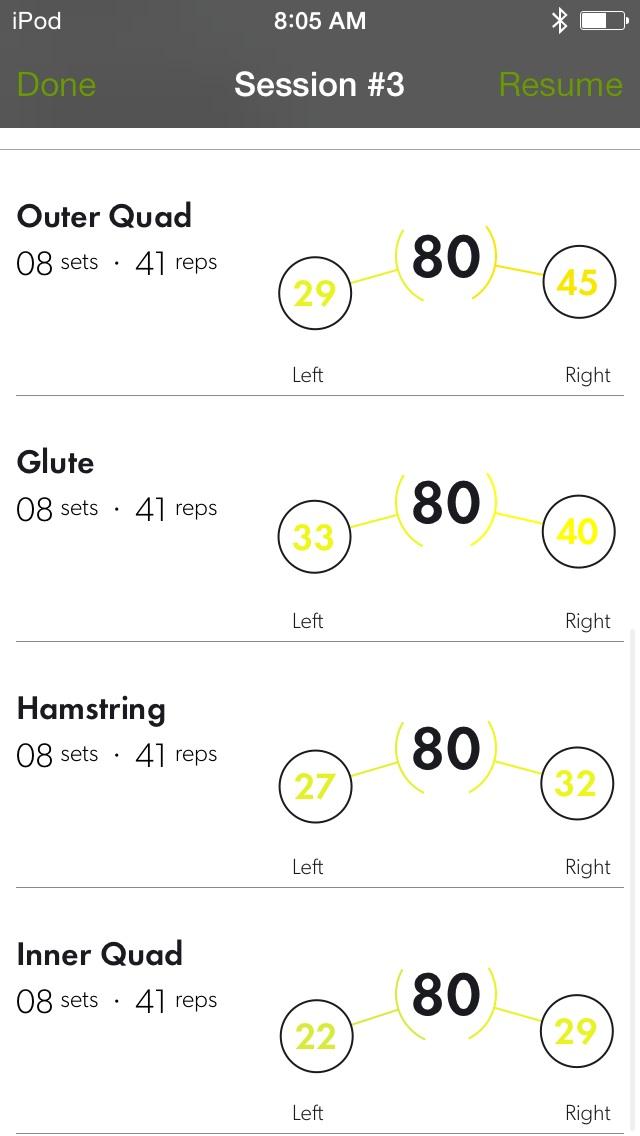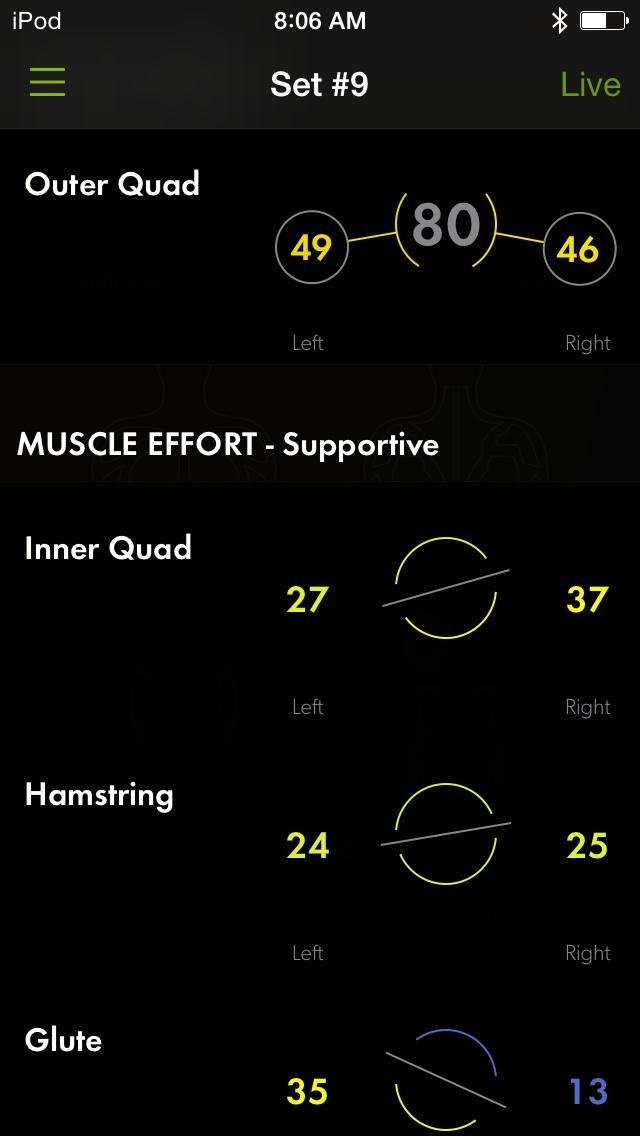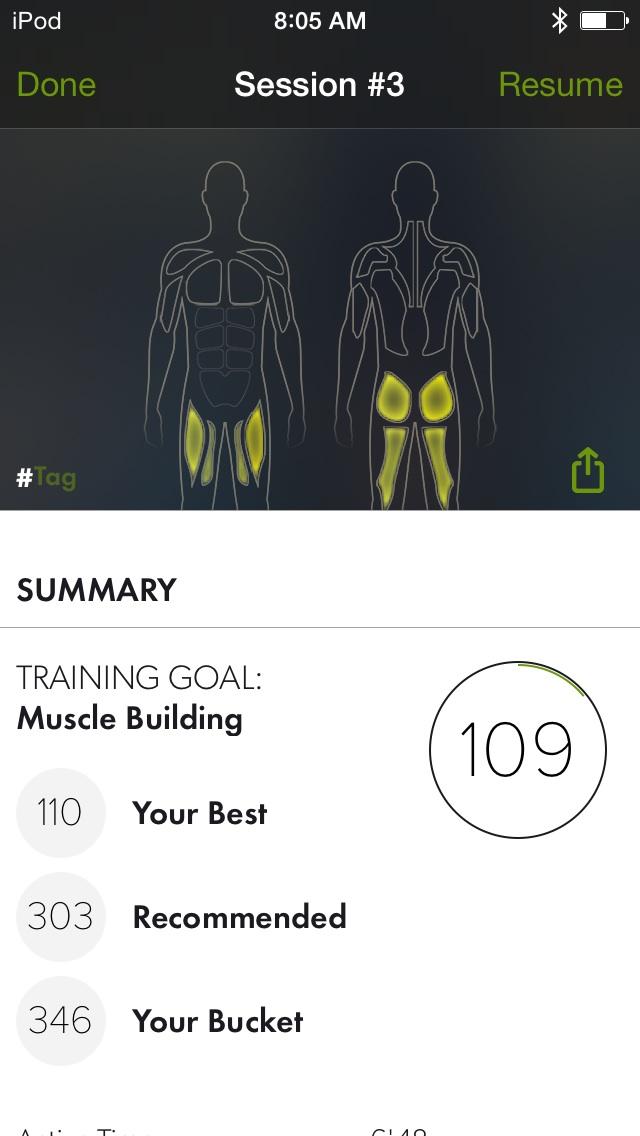Earlier this week, a complete stranger asked me to take off my underwear.
I was at a hotel, preparing for a workout after waking at the coffee-can’t-help-you hour of 5:00 a.m. to test out the newest wearable. This class of product doesn’t wrap around your wrist, however, nor do you wear it on your face or in your sneakers.
“It’s like a personal trainer in your pants,” explained Jake Waxenberg, head of marketing and business development for Athos. His company makes wearable tech in the form of compression shorts fitted with sensors to measure your physical activity. By accurately measuring how your body performs during a workout, Athos can fine tune how you move, lift, spin and more, improving form and honing abilities. Voila: your ass just got smarter.
The shorts were as snug as Kim Kardashian’s jeans.
I complied. (But let’s hope this doesn’t become a regular request.)
The shorts were as snug as Kim Kardashian’s jeans, although any football player or other modern athlete will swear they help performance. Athos does that another way, aggregating information from the sensors in their smartshorts into a smartphone app that shows the body’s major muscle groups and how hard each one is working. This data helps you fine tune your form, showing when you’re cheating by using your quadriceps rather than your hamstrings, or measuring the precise degree to which you favorite your left leg.
The software also compiles an overall score for your personal exertion level, showing precisely how much harder you worked out than the slob next to you in spin class. The shorts are the company’s first product, which it plans to sell for $99 (plus $199 for the Bluetooth transmitter) this fall. The company plans a follow-up shirt in 2015.
Athos is neither the only company in the smart-clothing space nor the first. The most similar company is Hexoskin, a Montreal-based company that already makes a $399 sensor-enabled smartshirt to measure heart rate and breathing and to track your movements. Hexoskin has been selling its shirts since 2012, and was founded way back in 2006, one year before Fitbit. Then there’s newcomer Omsignal, founded in 2011 with plans for virtually the same product, a sensor-enabled shirt that monitors the intensity of your workout, your heart rate, and your breathing.
All of this wearable gear is machine washable — again, just like Kim Kardashian’s jeans.
“This is a new product category,” Hexoskin CEO Pierre-Alexandre Fournier told Digital Trends. “I would say smart watches are still in the watch category, in a way. Retailers have a pretty good idea of how to display a product. For smart clothing it’s different. Stores don’t have a biometric clothing section.”
“Things would be easier” if there were more competition, he said.
Yet some of these smart clothing companies are starting to chafe. Proprietary algorithms separate Athos from the others, Jayalath explained; it’s unclear how much separates Omsignal from Hexoskin. The two companies were former partners — now they share addresses in the same city and courtroom time thanks to an injunction Hexoskin has filed. Just where did Omsignal get its ideas? We’ll see as the court battle plays out.
“It’s like a personal trainer in your pants.”
The roots of the technology behind Athos stretch back 60 years, Waxenberg told me, although it’s only more recently that high-end clinics and professional sports teams began adopting it. In my experience, the technology proved itself handy immediately. I attempted a few deadlifts and lunges, while Waxenberg held a paired iPhone nearby. In the app, colors flash on muscle groups to indicate intensity, from light blue and green to yellow and red. I was only using light weights, but it was easy to see which muscles were working hardest, and to correct my form when I was relying too heavily on one side of my body or falling back on helper muscles.
A few sets of leg lifts showed another side to the app — we don’t always realize how much strength we have. I felt like I was working up a decent sweat lifting 60 or 70 pounds, but the app barely showed me trying. Over the next few minutes, Waxenberg bumped me up nearly a hundred pounds (thanks for that, buddy). My legs were screaming, and the app showed my exertion level soar.
Carrying a smartphone at the gym may be a culture hurdle for many. I rarely see people using them in the various gyms I visit in NYC, but Athos says a recent survey showed as many as 70 percent of people do keep their phone with them. That survey may show an opportunity for companies like Athos. On the other hand, it may also show that we all need a little separation from our smartgoods.
Not me. This fall, I’m buying a smartass.
Editors' Recommendations
- Garmin unveils touchscreen Fenix 7, AMOLED Epix smartwatches
- How taking your blood pressure is about to be as easy as taking your heart rate
- Apple Fitness+ now lets you work out with your friends
- Style-deprived fitness bands have helped cheap, ugly smartwatches to flourish
- Influencers will keep you company as part of Apple’s new Time to Walk program





